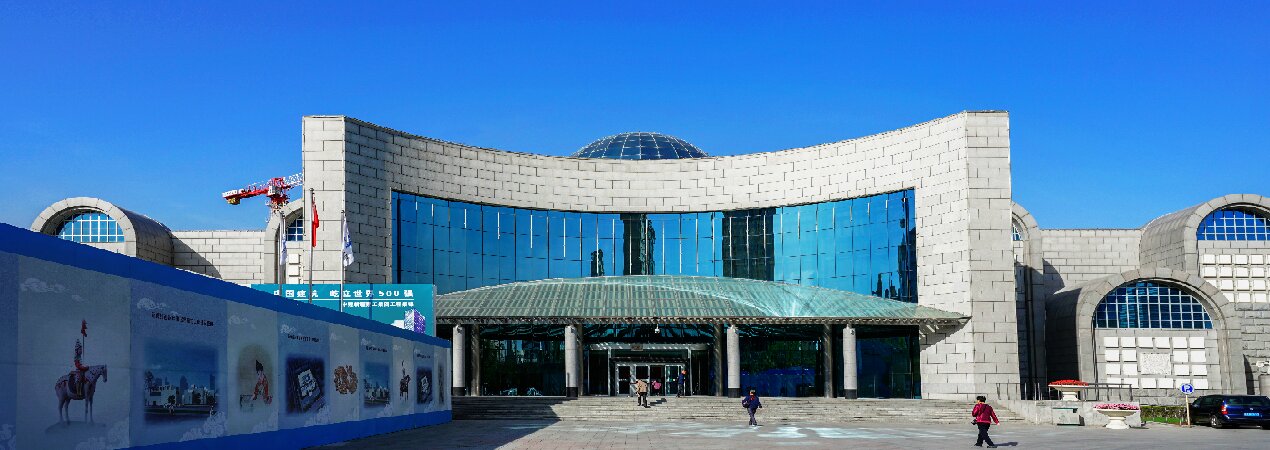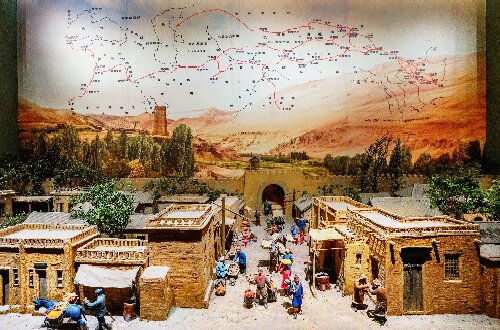Xinjiang Museum

The Xinjiang Museum is centered on displaying Xinjiang's history and culture, the integration of multiple ethnic groups, and the Silk Road civilization. Relying on Xinjiang's geographical advantage as the core hub of the Silk Road, it systematically presents the in-depth interaction between the Western Region civilization and the Central Plains civilization. Thanks to the extremely dry environment in some parts of Xinjiang, the multi-ethnic written documents, Silk Road textiles, ancient mummies, etc. in the Xinjiang Museum's collections are well-known nationwide and are irreplaceable.
- Chinese name: 新疆维吾尔自治区博物馆 Xīn Jiāng Wéi Wú ěr Zì Zhì Qū Bó Wù Guǎn
- Suggested time: One day
- Ticket: Free
- Open hours: 10:00 - 18:30 (The last admission time is 18:00). It is closed on Mondays, except for some special holidays. It's better to check the opening hours in advance as they may be adjusted during special holidays.
- The best time to visit: All year around
- Address: No. 581, Xibei Road, Shayibake District, Urumqi City, Xinjiang Uygur Autonomous Region, China
- How to get there: It's very convenient to drive by yourself.
Highlights of Xinjiang Museum
Ancient Mummies Exhibition
The Ancient Mummies Exhibition is located on the second floor of the Xinjiang Museum. By displaying ancient mummies from Xinjiang, along with ornaments, textiles, documents and other burial relics, it reproduces the production, daily life of ancient Xinjiang people, and the social outlook of that time. The exhibition features mummies from the Pre-Qin period to the Tang Dynasty. Famous mummies on display include the Loulan Beauty, the Xiaohe Princess, the Qiemo Man and Woman and General Zhang Xiong.
Xinjiang Ethnic Customs Exhibition
 Xinjiang Ethnic Customs Exhibition
Xinjiang Ethnic Customs ExhibitionThe Xinjiang Ethnic Customs Exhibition comprehensively displays the folk customs of 12 ethnic minorities, including the Uyghur, Kazakh, Hui, and Kirgiz, through wax figures and recreations of ethnic life scenes. The main exhibition hall also showcases yurts and animal specimens of the Kazakh, Kirgiz and Mongolian ethnic groups.
Xinjiang Ancient Costume Exhibition
The Xinjiang Ancient Costume Exhibition is located on the second floor of the Xinjiang Museum. The exhibition showcases ancient costumes, shoes, hats, accessories and other items from the Pre-Qin period to the Ming and Qing Dynasties in Xinjiang. Notable exhibits include the white-ground brown-striped woolen short-sleeved top unearthed from the Zagunluk ancient tombs and the Lingjiu-sheep brocade robe excavated from the Alaer tombs.
Xinjiang Unearthed Documents Exhibition
The Xinjiang Unearthed Documents Exhibition is located on the third floor of Phase II of the Xinjiang Museum. The exhibition is divided into four sections: Slips and Silk Documents, Paper Documents, Stele Inscriptions, and Research and Protection. It showcases 150 pieces (groups) of cultural relics, including slips, paper documents, silk books, brick inscriptions, stone tablets and other inscribed artifacts unearthed from ancient sites and tombs in Xinjiang. The cultural relics cover diverse fields such as military affairs, politics, economy, culture, and transportation.
If you visit this museum, be sure to see its precious collections, such as The Coiled Figure of Fuxi and Nüwa, the Five Stars Rising in the East Benefits China brocade, and the Tang Dynasty Painted Wooden Statue of a Heavenly King Trampling a Demon. Their exquisite craftsmanship and meticulous details showcase the wisdom and skills of the artisans.
Educational Value
Through microscopic analysis of the warp pattern technique of the "Five Stars Rising in the East Benefits China" brocade, the complexity of Han Dynasty jacquard weaving technology is revealed — complex patterns were created using multi-heddle and multi-treadle looms, with a warp density of 112 threads per centimeter, demonstrating the precise calculation capabilities of ancient textile engineering and allowing visitors to appreciate the extraordinary wisdom of the ancients.
Activities to do at Xinjiang Museum
Art Performances: The museum combines ancient Xinjiang and modern art forms to create performances such as Kucha Music and Dance, Princess of Xiaohe, and Harmony of Rhythms, which multi-dimensionally showcase the stories behind cultural relics and help you understand the close connections between Xinjiang and the Central Plains region.
Lectures and Trainings: The museum frequently invites experts and scholars to give lectures on various topics, including the history and culture of Xinjiang, archaeological discoveries, and cultural relics protection, providing in-depth knowledge in these fields.
Drop us a line and we'll connect you with the top China expert in no time!